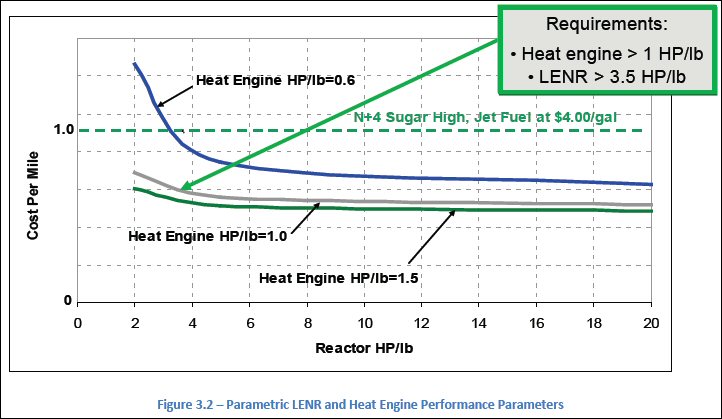LA BOEING E LA NASA INSERISCONO LE LENR-FUSIONE FREDDA IN UN PROGETTO PER UN NUOVO AEREO A BASSE EMISSIONI
L'interesse che il progetto dimostra da parte della Boeing e della Nasa è un indicatore del reale e crescente riconoscimento della ricerca sulle LENR (cosiddetta Fusione Fredda), tecnologia che può contribuire in maniera determinante ad abbattere le emissioni di carbonio libero e i rischi sempre più evidenti di disastro climatico. Tutti sanno che un contributo determinante all'effetto serra è dovuto all'enorme immissione nell'alta atmosfera dei gas combusti di carbonio e particolati derivati dall'uso di idrocarburi nei motori degli aerei, in particolare negli ultimi decenni che hanno visto un aumento esplosivo del traffico aereo. L'interesse della Boeing e della Nasa non può essere casuale ma evidentemente deriva da una conoscenza diretta dei risultati sempre più eclatanti dei vari gruppi di ricerca sulle LENR in particolare di quelli ottenuti dal gruppo di ricercatori che studiano le reazioni nucleari a bassa energia al MIT di Boston.
Il documento, intitolato "Subsonic Ultra Green Aircraft Research Phase-II: N+4 Advanced Concept Development," è stato scritto da Marty K. Bradley e Christopher K. Droney di Boeing Research and Technology e preparato per la NASA dal Langley Research Center.
Il documento è il risultato di un lavoro di squadra da parte di Boeing Research and Technology, Boeing Commercial Airplanes, General Electric e il Georgia Institute of Technology per la progettazione aerospaziale (Laboratorio Sistemi) che hanno lo scopo di identificare e analizzare i concetti e le tecnologie avanzate per gli aerei che potranno volare nel periodo 2030-2035.
Il documento può essere letto integralmente qui
Tra i partecipanti ai workshop tenuti per elaborare il testo vi erano rappresentanti della Federal Aviation Authority e Virginia Tech.
Il gruppo di studio composto da tecnici qualificati ha riconosciuto le caratteristiche ormai accertate in molti studi delle eccedenze di energia ottenibili dalle LENR: alta densità di potenza, emissioni ridotte e basso impatto ambientale. La relazione ipotizza che il rapporto calore-potenza del reattore rispetto al peso del dispositivo basato sulla tecnologia delle LENR è in grado di offrire un notevole risparmio sui costi - il 33 per cento meno- rispetto ad un velivolo convenzionale alimentato con le fonti tradizionali.
Il rapporto afferma: "Il gruppo ha identificato che il sistema LENR potrebbe avere enormi benefici, ma i rischi tecnici sono estremamente elevati" e che "un importante passo avanti nella tecnologia nucleare avrebbe un impatto significativo su tutta la struttura energetica in tutto il mondo."
Allego un capitolo del rapporto in cui si tratta delle LENR:
3.0 LENR Requirements Analysis
The idea of using a Low Energy Nuclear Reactor (LENR) was discussed at the N+4 Workshop,
both as a ground-based source of energy to create electricity or hydrogen, and an aircraft-
carried power source for primary propulsion. Given the potential of clean zero-emissions
energy, further work was identified for both applications. Nuclear energy is a potential source
of clean low cost energy that should be considered in a detailed energy study (see Section 4.0).
In this section we will discuss the potential and requirements for a flying LENR application for
aviation.
Since a LENR is essentially a source of heat, a heat engine of some kind is needed to produce
useful work that can create an integrated propulsion system for an aircraft. It was decided to do
a relatively simple study to determine the range of LENR and heat engine performance that
would produce an aircraft competitive to a conventional fueled aircraft.
Some potential heat engine cycles with representative engine power to weight ratios are shown
in Figure 3.1. Heat engine power to weight is a strong function of delta temperature from the
LENR. Achievable LENR delta temperature is not known at this time and is beyond the scope of
this current investigation. Nevertheless, we decided to parametrically vary the LENR and heat
engine power per weight and apply a top level operating cost model. Even though we do not
know the specific cost of the LENR itself, we assumed a cost of jet fuel at $4/gallon and weight
based aircraft cost. We were able to calculate cost per mile for the LENR equipped aircraft
compared to a conventional aircraft (Figure 3.2). Looking at the plots, one could select a point
where the projected cost per mile is 33% less than a conventionally powered aircraft (Heat
engine > 1 HP/lb & LENR > 3.5 HP/lb). Since the power requirements are significantly different
at cruise compared to takeoff and climb, we also investigated a hybrid case where batteries and
an electric motor are used to supplement the heat engine + LENR at takeoff. This yielded
significantly improved results (Figure 3.3) which required lower LENR and heat engine
performance levels (Heat engine > 0.4 HP/lb, LENR > 1 HP/lb, & Batteries > 225 Wh/kg).
These numbers are illustrative only, as other combinations could yield useful propulsion and
power systems, and the results are dependent on cost and performance assumptions.
However, the numbers should be useful in establishing initial system goals for LENR concepts.
NASA Contract NNL08AA16B – NNL11AA00T – Subsonic Ultra Green Aircraft Research – Phase II
N+4 Advanced Concept Development


Nessun commento:
Posta un commento